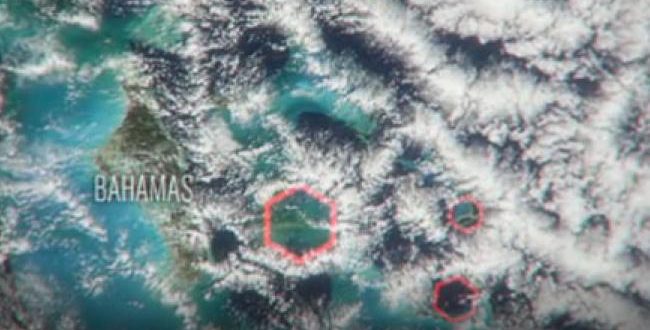Scientists may have at last reached a conclusion regarding the mystery of the Bermuda Triangle. It is basically an area comprising 500,000 square miles of ocean.
A new theory suggests these hexagonal-shaped clouds create a wind gusts of up to 170 mph, causing ships to sink and planes to crash. These so-called “air-bombs” are so powerful that scientists are comparing them to hurricane-level winds, according to the New York Post.
“The satellite imagery is really bizarre,” said meteorologist Dr. Randy Cerveny, according to The Mirror. “These types of hexagonal shapes in the ocean are in essence air bombs. They’re formed by what is called microbursts and they’re blasts of air that come down out of the bottom of a cloud and then hit the ocean and then create waves that can sometimes be massive in size as they start to interact with each other.”
The Bermuda Triangle is a 500,000-square-mile area of water in the north Atlantic Ocean, bounded by Miami, Puerto Rico and Bermuda, and has allegedly been the cause of 75 plane disappearances and hundreds of ship sinkings.
The first report of strange occurrences at the notorious Bermuda Triangle date back to 1492, when Italian explorer Christopher Columbus noted strange lights and off compass readings when passing through the area.
Since then, dozens of ships and planes have disappeared in the area, and many of the people who enter the area are never seen again. The most recent story is from 2015, when the cargo ship SS El Faro went missing in the Triangle after being caught in a hurricane. Only one body was found, with the other 32 crew members assumed lost at sea.
The hexagonal clouds may provide an answer as to why so many disasters happen in the area, but they are still puzzling meteorologists, as the clouds are nothing like they’ve ever seen before.
“You don’t typically see straight edges with clouds,” said meteorologist at Colorado State University Steve Miller. “Most of the time, clouds are random in their distribution.”
It’s not only their odd shape that are stumping scientists, but their size, too. Some clouds found at the tip of the island of Bermuda are 20 to 55 miles across.
While it’s still unclear why these clouds form in the first place, the new satellite imagery is being hailed as a breakthrough and can be considered the most promising clue to a scientific explanation for the mystery of the Bermuda Triangle.
Agencies/Canadajournal
 Canada Journal – News of the World Articles and videos to bring you the biggest Canadian news stories from across the country every day
Canada Journal – News of the World Articles and videos to bring you the biggest Canadian news stories from across the country every day



